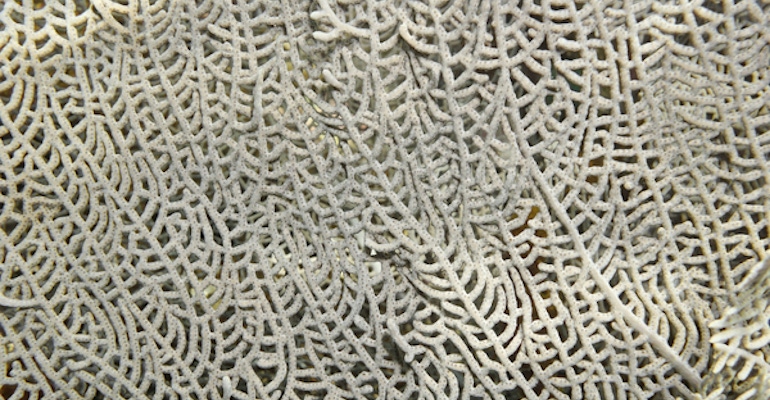Bacteria-Based Bioink 3D Prints Bone-Like Composites
A novel bioink can be used in standard printing processes and has potential for application in biomedicine and marine biology.
March 8, 2023

Researchers have created a new bacteria-based bioink that can print composite materials that have a similar strength and texture to bone, paving the way for innovations in biomedical and marine applications, they said.
A team from the Swiss Federal Institute of Technology (EPFL) in Lausanne developed the ink, dubbed BactoInk, which contains a calcium carbonate-producing bacteria Sporosarcina pasteurii. Researchers found that they can use the ink to 3D-print virtually any shape, which will then gradually mineralize over the course of a few days to form objects that are both strong and light.
Indeed, materials with these properties are often found in nature—such as in the shells of mollusks or human bone—but they are difficult to reproduce synthetically, noted Esther Amstad, one of the researchers on the project and the head of EPFL's Soft Materials Laboratory, where the ink was produced.
To find a material that can do this and meet the requirements for extrusion 3D printing processes is even rarer still, she said. “The number of materials that can be 3D-printed is limited for the simple reason that inks must fulfill certain flow conditions,” Amstad said. “For example, they must behave like a solid when at rest, but still be extrudable through a 3D printing nozzle—sort of like ketchup.”
Researchers previously have used 3D printing inks containing small mineral particles to meet some of the criteria for flow that printing demands, but without desired results. Instead, these inks produce structures that tend to be soft, or to shrink once they've dried, leading to cracking and lack of control over the final product, Amstad noted.
Producing the Bioink
Researchers had to find a different way to print to achieve the material they were seeking when they developed BactoInk. Instead of printing minerals, they printed a polymeric scaffold using the ink, and then mineralized the product in a second, separate step, Amstad said. "After about four days, the mineralization process triggered by the bacteria in the scaffold leads to a final product with a mineral content of over 90 percent,” she said.
The resulting material is a biocomposite that can be used in standard 3D printing processes using natural materials, which precludes the need for high-temperature printing that's required of manufacturing similar synthetic materials such as ceramics, researchers said. Moreover, the living bacteria used to create the material is submerged in ethanol during the final step of the mineralization process, so it is no longer alive in the resulting product, they said.
Various Bioink Applications
Researchers published a paper on their work in the journal Materials Today and envision that their bioink can be used in applications from art restoration to ecology to biomedicine, they said.
One reason Bactoink can be so useful and varied in its application is that it can be directly injected into a mold or target site—such as a chipped vase or sculpture, for example—making it a useful artist's tool.
Its use of natural materials also make it well-suited for building artificial coral reefs as part of coral restoration projects that are ongoing around the world to bolster the marine environment. This combined with Bactoink's structural and mechanical similarities to human bone also make it a good fit for biomedical applications, researchers said.
“The versatility of the BactoInk processing … opens up many new possibilities for fabricating lightweight, load-bearing composites that are more akin to natural materials than to today’s synthetic composites,” Amstad said.
About the Author(s)
You May Also Like

.png?width=300&auto=webp&quality=80&disable=upscale)
